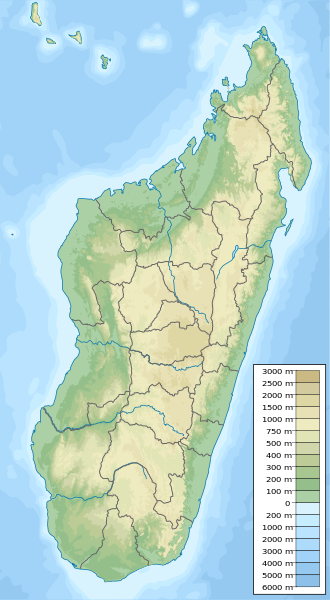Geography
This reserve is situated in Analamanga region, 140 km (87 mi) north-west of the town of Antananarivo in the district of Ankazobe. It covers 1,800 ha (4,400 acres) of primary rainforests and 3,800 ha (9,400 acres) of grassland savannah. [3] It consists of several sections of the last primary rainforest, on the high plateau in central Madagascar, along with grasslands, caves and waterfalls, at an altitude of 1,300 metres (4,300 ft) to 1,650 metres (5,410 ft). The mean annual rainfall is 1,823 millimetres (71.8 in). [4] [5] The entrance to the reserve is on route 4, near the village of Arazana and the nearest hotel is at Ankazobe. [5]
The ethnic groups living in and around the reserve are the Betsileo, Betsimisaraka, and Merina peoples. [4]
This page is based on this
Wikipedia article Text is available under the
CC BY-SA 4.0 license; additional terms may apply.
Images, videos and audio are available under their respective licenses.


